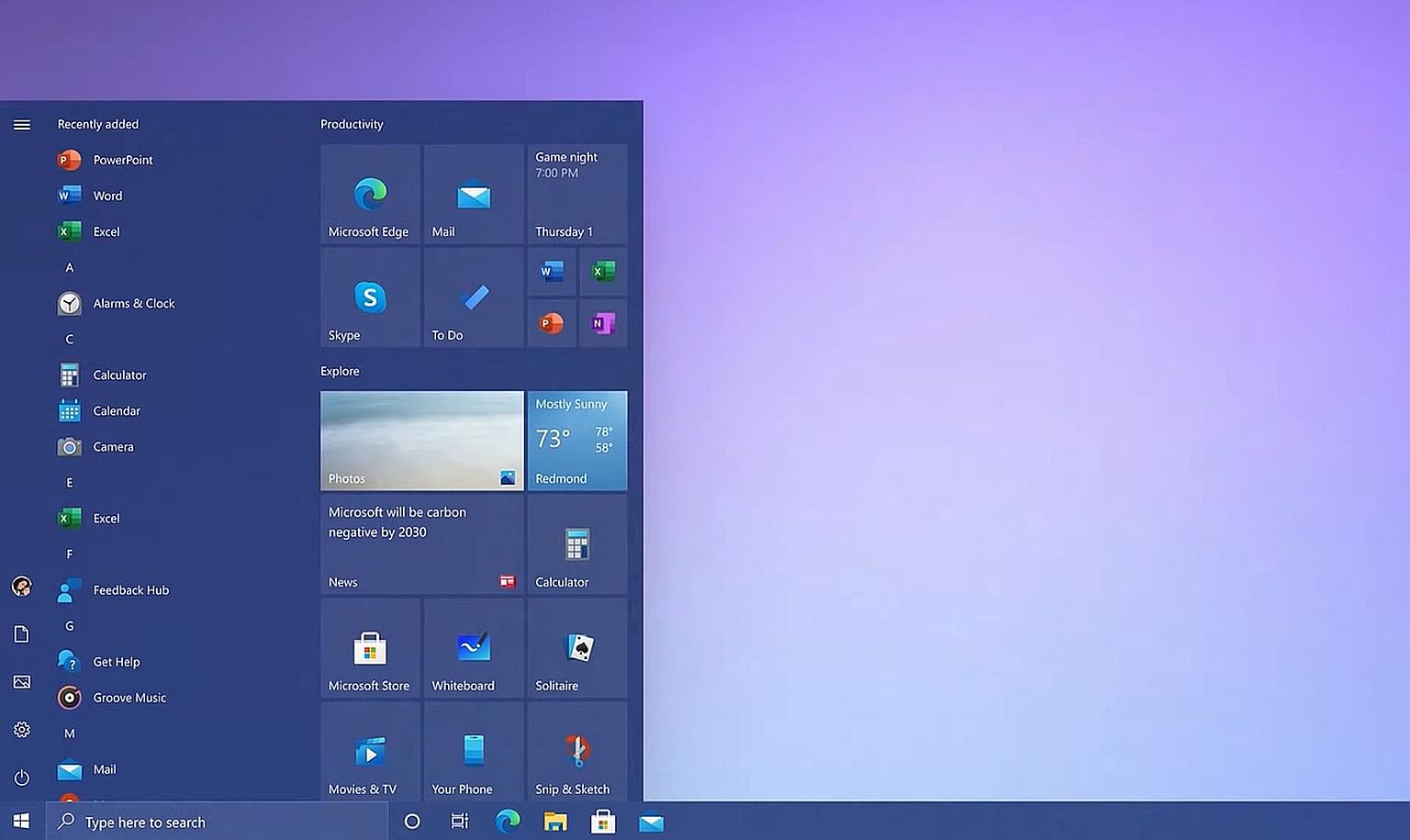How to spruce up and speed up your Windows 10 PC for CNY
Sign up now: Get ST's newsletters delivered to your inbox

The more streamlined Windows 10 Start menu introduced in an update of the operating system in October last year. Give your personal computer more space by uninstalling old programs and clearing out large files.
PHOTO: MICROSOFT
Alvin Soon
Follow topic:
With Chinese New Year in full swing, why not also clean up, declutter and speed up your Windows personal computer? Here are eight tips to spruce up your Windows 10 computer.
1 RUN A VIRUS AND MALWARE SCAN
Microsoft's Windows 10 has a perfectly reliable anti-virus, malware and spyware detection capability built in called Window Defender and it is free. Make sure to set it up for automatic updates and background monitoring so that you do not have to worry about the basic health of your Windows machine.
Microsoft has several Cybersecurity Centres around the world, including one in Singapore, and they work in conjunction with Microsoft's Cybercrime Satellite Centre Singapore (an extension of Microsoft's Cybercrime Centre in Redmond). But if you still feel the need for third-party validation, there are more options.
Avira Free Antivirus does not cost anything and scans for both viruses as well as malware. Malwarebytes Anti-Malware is another free app, but it focuses on removing malware, not viruses.
2 UNINSTALL OLD PROGRAMS
Uninstall old programs to clear out disk space. Click on "Start" in the taskbar at the bottom, then view all apps, right click on any program you do not want and choose "Uninstall".
You can also type "Control Panel" in the taskbar's search box or icon, select "Programs", then "Programs and Features" and select an app to uninstall it. Another way is to right click on "Start", then "Apps and Features" and select an app you want to uninstall.
3 CLEAR OUT OLD LARGE FILES
Find out which files are taking up the most space on your PC with Windows 10's built-in storage analyser. Go to "Start", "Settings", then "System" and finally "Storage", and choose a drive. Windows will show you a list of categories and folders with information on how big they are. Look inside each section to see if there are any large, unused files you can delete. But be careful not to delete important programs.
4 CLEAR JUNK USING DISK CLEAN-UP
Use Windows' Disk Clean-up utility to delete unnecessary Windows files on your hard drive. Type "Admin" in the taskbar's search box, choose "Windows Administrative Tools", then "Disk Clean-up". Choose the drive you want to clean, and then click "OK". Select the files you want to delete, choose "OK", then select "Delete Files". To delete system files you no longer need, click "Clean up system files".
5 STOP APPS FROM SLOWING DOWN SYSTEM START-UP
After installation, some apps will set themselves to launch at the same time you boot up your system. This can be convenient - it reduces load time for commonly used programs - but it can also slow down your start-up process.
To see which programs load at start up, press CTRL+SHIFT+ESC on Windows 10 to bring up your Task Manager. Switch to the "Start-up" tab, and you can see which programs run on start up. Right click to disable any you do not use. Windows 10 will even tell you which programs have the biggest impact on start-up speed.
6 CLEAN UP YOUR WINDOWS 10 TASKBAR
If you prefer a cleaner look for your Windows 10 taskbar, you can remove icons on it.
If you have pinned items on the taskbar which you do not use any more, right click the item and choose "Unpin from taskbar". Right clicking and unchecking "Show Cortana button" removes the Cortana digital voice assistant icon.
If you do not use virtual desktops (known as "Task View" on Windows 10), right click the taskbar and uncheck "Show Task View button".
7 TURN OFF ALL NOTIFICATIONS
You can turn off annoying notifications so you can focus on your work. Go to "Start", "Settings", then "System" and select "Notifications & Actions" and turn off all the notifications there.
8 DEFRAG YOUR PC
If you are still relying on a mechanical hard disk instead of a solid state drive (SSD), an old and good method of speeding up your Windows machine is to defragment the hard drive. You do not need to do this if you are using an SSD. Windows 7, 8 and 10 should automatically stop you from doing so if you are.
If you are running Windows 7 and above on a hard disk, your Windows is set to run defrag automatically on a regular basis and you will not need to defrag your PC. But if you have turned this feature off, or turn your PC off every time you finish using it, Windows might not have defragged your hard disk for a while, in which case you can do it manually.
In the taskbar's search box, type "defrag", select "Defragment and Optimise Drives" and select the disk you want to defrag. The feature will tell you when a disk was last defragged, and whether or not you should optimise it now.
If you are not sure whether you should, select your drive and click "Analyse" first to check. If the percentage of fragmentation on the disk is above 10 per cent, it is recommended that you defrag it.
HARDWAREZONE

